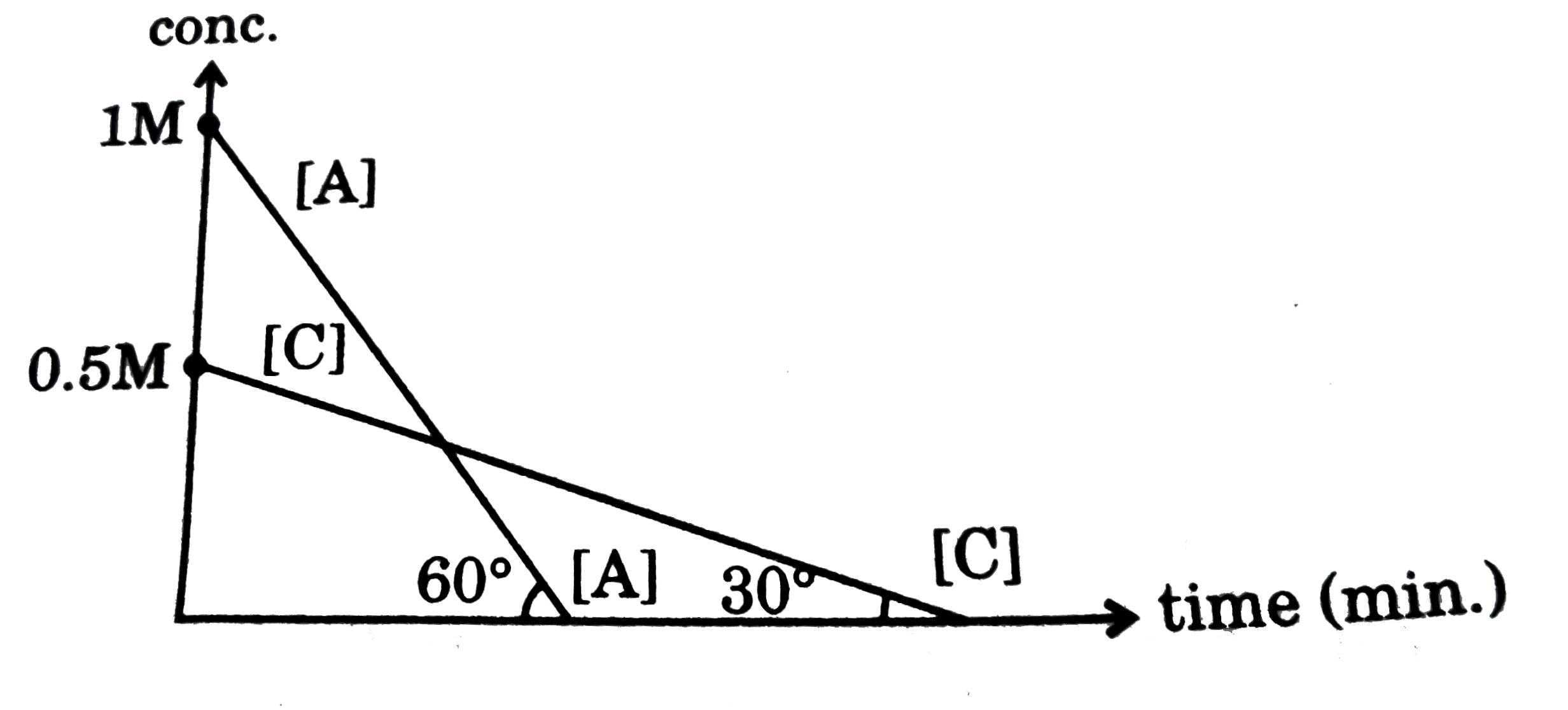(a) Arrrange A,B,C and D in order of incresing electrode potential in the electrochemical series if
(i) A+B+→A++B,(ii)B+D+→B++D
(iii) B+C+→B++C,(iv)C++D→ NO reaction
(b) on the basis of the above data predict which of the following reaction will ocur
(i) A+C+→A++C,(ii)A++D→A+D+
(a) In the electrochemical series the atoms or species are arranged in order of their decreasing electrode potential
(i) since B is reduced by A therefore B has higher electrode potential than A
(ii) since D is reduced by B therefore D has higher electrode potential than B
(iii) Since C is reduced by B therefore C has higher electrode potential than B
(iv) since there is not reaction between C+ and D i.e C is not reduced by D therefore elecrode potential of the four elements decrease in the order D>C>B>A
(b) (i) since electrode potential of C is higher than that of A therefore C+ can be easily reduced by A reacton (i) will occur
(ii) since electrode potential of D is higher than that of A therefore A+ cannot be reduced of by D i.e reaction (ii) wil not occur
Topper's Solved these Questions
- REDOX REACTIONS Book:PRADEEPChapter:REDOX REACTIONS Exercise:Problems
Explore 4 Videos
- REDOX REACTIONS Book:PRADEEPChapter:REDOX REACTIONS Exercise:Multiple Choice Question
Explore 84 Videos
- REDOX REACTIONS Book:PRADEEPChapter:REDOX REACTIONS Exercise:Very Short Answer Question
Explore 21 Videos
- POLYMERSBook:PRADEEPChapter:POLYMERSExercise:IMPORTANT Questions (For Board Examination)
Explore 27 Videos
- SOLUTIONSBook:PRADEEPChapter:SOLUTIONSExercise:IMPORTANT QUESTIONS FOR BOARD EXAMINATION
Explore 31 Videos
Similar Questions
(a) Use the following reactions to arrange the elements A ,B, C and D in order of their redox reactivity :
(i) A+B+→A++B
(ii) B+D+→B+D
(iii) C++D→ No reaction
(iv) B+C+→B+C
(b) On the basis of above redox activity series predict which of the following reactions would you expect to occur.
(i) A+C→A+C+ (ii) A++D→A+D+
View SolutionIf a,b,c,dare in proportion, then a:b=c:dand written as a:b::c:d.
Which of the following is true?
View Solution
Knowledge Check
For the reaction, 2A+B→C+D, the order of reaction is
AOne with respect [B]BTwo with respect to [A]CThreeDCannot be predictedFor the reaction, 2A+B→C+D, the order of reaction is
AOne with respect to [B]BTwo with respect to [A]CThreeDCan't be predictedFor the two reactions
Reaction I: A→B
Reaction II: C→D
following curves are plotted.
 Which of the following is incorrect options ? A(t100%)reaction I=23(t100%)reaction IIB[A]=[C] at t=√34 minutesCWhen [B]=[A] at the time [C]=[D]DIf both [A]0 and [C]0 are 1M then (t50%)I=13(t50%)II
Which of the following is incorrect options ? A(t100%)reaction I=23(t100%)reaction IIB[A]=[C] at t=√34 minutesCWhen [B]=[A] at the time [C]=[D]DIf both [A]0 and [C]0 are 1M then (t50%)I=13(t50%)II
On the basis of given reactions,the correct order of increasing oxidising of A,B,C & D is. [(a)A−+B→A+B− , (b) C+D−→noreaction , (c) C−+B→noreaction, (d) D+A−→D−+A]
View SolutionWhat should come next in the following letter series ?
A A B A B C A B C D A B C D E A B C D E F A B C D E F ?
1) A
2) H
3) G
4) I
5) None of these
View SolutionFor a reaction, A+2B→C, rate is given by +d[C]dt=k[A][B], hence, the order of the reaction is
View SolutionGiven the following reaction involving A,B,C and D
(i) C+B+→C++B
(ii) A−+D→ NO reaction
(iii) C++A→ NO reaction
(iv) D+B+→D++B
the correct arrangement of A,B,C,D in the order of their decreasing ability as reducing agent
View SolutionB U B D C E D B D E U B A D C B E A C D A E B A U A C D B C A C
If all A's are dropped from the above arrangement, which of the following will be eleventh from the right end of the above arrangement
View Solution